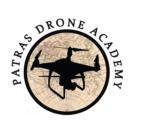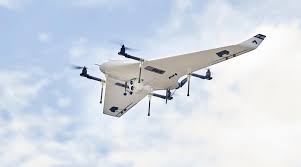Autonomous and Automated Drones:
The Legislative Approach of the European Union
The world of drones has experienced a revolution in recent years, with the technology advancing at lightning speed. Among the most important developments in this area is the development of autonomous and automated drones. However, the emergence of these advanced technologies raises new legal issues and challenges, especially in the context of the European Union.
Introduction to Autonomous and Autonomous Drones:
Autonomous and autonomous drones refer to autonomous systems that are able to operate without constant human intervention. Unlike conventional drones that operate with the active participation of the pilot, autonomous and automatic drones are able to make decisions based on artificial intelligence and the algorithms that govern them.
European Union legislation:
The European Union has recognised the importance of regulating the use of drones, as well as encouraging innovation in this area. In May 2019, the European Union adopted Regulation EU 2019/947, also known as the “Regulation on Flight Recognition Data for Aeronautical Navigation”, which provides the legal framework for the use of drones in EU Member States.
This regulation includes provisions on the regulation of the use of drones, security and data protection, as well as the conditions for the commercial and non-commercial use of these systems. In addition, the regulation establishes different categories of flights for drones, depending on their weight and category of use.
Differences between Autonomous and Autonomous Drones:
Although the terms “autonomous” and “automatic” are often used interchangeably, there are some differences between them. Autonomous drones refer to systems that are able to make decisions based on artificial intelligence and the algorithms that govern them, but still operate under human supervision and control. In contrast, autonomous drones are able to operate entirely without constant human intervention, making decisions and performing tasks autonomously.
Challenges and Perspectives:
The development and use of autonomous and automated drones has huge potential in many areas, such as agricultural production, environmental monitoring, delivery of goods and security assurance. However, there are also challenges that need to be addressed, such as privacy, security and data safety, as well as ensuring accountability and ethical use of these technologies.
Growth and Innovation:
The development of autonomous and autonomous drones opens up new horizons in the field of innovation. Businesses and research organisations are constantly looking for new ways to use these technologies to address challenges in different areas. From monitoring air pollution to providing medical assistance in remote areas, the applications of autonomous and autonomous drones are many and varied.
Data Protection and Privacy:
One of the main challenges to be addressed is data protection and the preservation of citizens’ privacy. The collection and analysis of data by autonomous and autonomous drones can raise concerns about privacy and possible misuse of personal data. It is therefore important to put in place appropriate legislative mechanisms to ensure proper management and protection of such data.
Safety and Security:
Another important issue that arises is the safety and protection against any accidents or illegal use of autonomous and autonomous drones. The ability of these systems to operate autonomously can raise concerns about the possibility of accidents or collisions, especially when used in close proximity to people or property. Therefore, the development and use of these technologies must be accompanied by appropriate safety and security measures.
Education and Awareness Raising:
Finally, it is important to focus on education and public awareness about the use of autonomous and autonomous drones. Citizens need to be informed about the potential and risks of these technologies, as well as educated on the correct usage practices and compliance with current legislation.
Conclusions:
Autonomous and automatic drones represent an important step towards the next generation of aerial and manned drones. With the right regulation and the right challenges, the European Union can take full advantage of the benefits of these advanced technologies and ensure that they are used safely and with respect for citizens and the environment.

